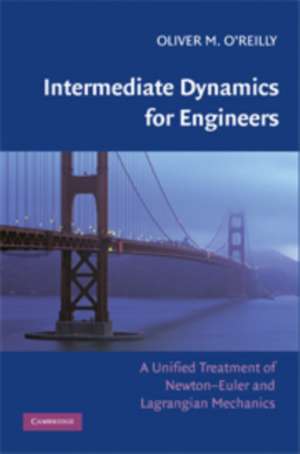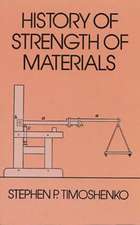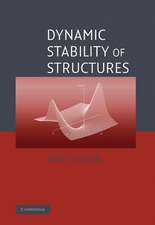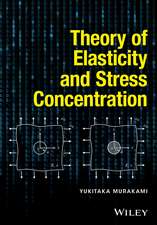Intermediate Dynamics for Engineers: A Unified Treatment of Newton-Euler and Lagrangian Mechanics
Autor Oliver M. O'Reillyen Limba Engleză Hardback – 3 aug 2008
| Toate formatele și edițiile | Preț | Express |
|---|---|---|
| Hardback (2) | 710.99 lei 22-36 zile | |
| Cambridge University Press – 29 ian 2020 | 710.99 lei 22-36 zile | |
| Cambridge University Press – 3 aug 2008 | 806.27 lei 38-44 zile |
Preț: 806.27 lei
Preț vechi: 1047.11 lei
-23% Nou
Puncte Express: 1209
Preț estimativ în valută:
154.28€ • 161.49$ • 128.41£
154.28€ • 161.49$ • 128.41£
Carte tipărită la comandă
Livrare economică 26 martie-01 aprilie
Preluare comenzi: 021 569.72.76
Specificații
ISBN-13: 9780521874830
ISBN-10: 0521874831
Pagini: 408
Ilustrații: 111 b/w illus.
Dimensiuni: 178 x 254 x 24 mm
Greutate: 1 kg
Editura: Cambridge University Press
Colecția Cambridge University Press
Locul publicării:New York, United States
ISBN-10: 0521874831
Pagini: 408
Ilustrații: 111 b/w illus.
Dimensiuni: 178 x 254 x 24 mm
Greutate: 1 kg
Editura: Cambridge University Press
Colecția Cambridge University Press
Locul publicării:New York, United States
Cuprins
Part I. A Single Particle: 1. Kinematics of a particle; 2. Kinetics of a particle; 3. Lagrange's equations of motion for a single particle; Part II. A System of Particles: 4. Equations of motion for a system of particles; 5. Dynamics of systems of particles; Part III. A Single Rigid Body: 6. Representations of rotations; 7. Kinematics of rigid bodies; 8. Constraints on and potential energies for a rigid body; 9. Kinetics of a rigid body; 10. Lagrange's equations of motion for a single rigid body; Part IV. Systems of Particles and Rigid Bodies: 11. Dynamics of systems of particles and rigid bodies.
Recenzii
'This book is unusual amongst dynamics books in that it treats rotation as an operator, a tensor, which acts on vectors. The more common approach in other books is to treat rotation, indirectly, as a matrix used for a change of coordinates. O'Reilly's rotation-is-a-tensor approach is common in continuum mechanics and is, I think, simply better. It allows direct derivation of the various component formulas without notational tricks.' Andy Ruina, Cornell University









